It's not easy building a flagship GPU architecture from
scratch. Just ask NVIDIA.
The Geforce GTX 480 was supposed to be a videocard
with competitive features like DX11 and multi-monitor display output, while
being able to beat its rivals in benchmarks. It was supposed
to maintain acceptable heat, power draw and noise levels, and of course all of this
was to be accomplished while factoring in cost. It's a balance that ASUS' Geforce GTX
480-based ENGTX480-2D1-1536 just can't manage.
As PCSTATS has seen in its recent
head-to-head review, the Geforce GTX videocard
manages to achieve excellent, but comparable performance in benchmarks against
the Radeon HD 5870 graphics card, which is no small feat. NVIDIA
had to do a lot of digging in order to come up
with a suitable rival for ATI's latest flagship videocard... in fact nVidia was some six months behind
ATI in coming up with a DirectX 11 GPU. Must have been all
that 3D Vision stuff clogging up the works in Santa Clara.
I imagine that NVIDIA's mentality was that showing up
half a year late with a slower videocard was out of the question. The Geforce GTX 480
and the GF100 GPU it's built with just fall short of a clear victory
over the performance offered by a Radeon HD 5870-series, at the latter's 188W TDP. NVIDIA raised the
clockspeeds of its GF100 "Fermi" GPU and in the process increased overall TDP
to a finger-burning 250 Watts, resulting in comparable performance but also a videocard that's louder,
draws more power and generates more heat than is ideal.
As you might have guessed, building a flagship videocard
based on a new architecture is expensive. The ASUS ENGTX480-2D1-1536's videocard comes in a dual-slot wide PCI Express
2.0 x16 format and retails for around $535 CDN ($510 USD, £350 GBP) . At these price
levels we're very certainly in the relm of flagship enthusiast gaming cards.
Not exactly surprising, but it should be noted that $500 USD will also get you the
heavily customized and overclocked Gigabyte GVR587SO-1GD graphics card. Vanilla Radeon HD 5870 videocards can be found
at certain online stores for as low as $390 too.
 |
|
ASUS ENGTX480-2D1-1536
Videocard |
|
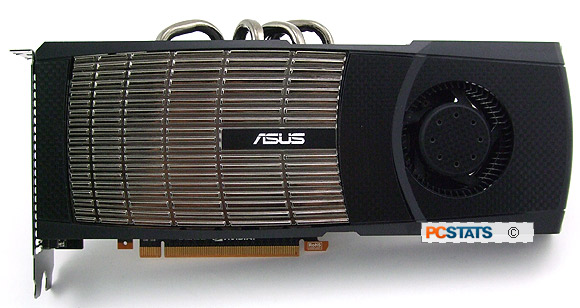
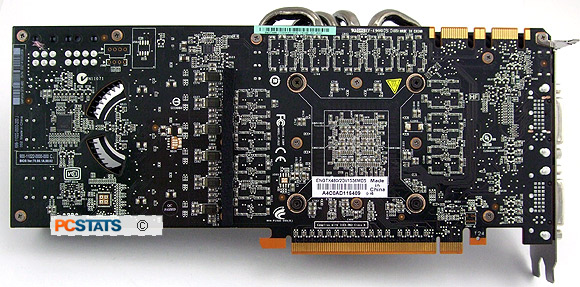
|
|
|
|
INCLUDES:
Driver CD, Utility CD, molex-to-PCI
Express converter, DVI-to-VGA and DVI-to-HDMI converters. |
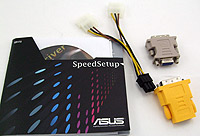 |
|
Graphics Processor: Geforce
GTX 480 (701 MHz)
Memory Capacity: 1.5GB
GDDR5 (3696 MHz)
Card Format: PCI Express
x16 2.0, two slots wide.
Outputs:
DisplayPort, HDMI, DVI-D
Videocard Class:
Enthusiast | |
| |
NVIDIA do stress that the Geforce GTX 480
is more than just a gaming card. And it
is.
The Geforce GTX480 is the first videocard built around
NVIDIA's Complete Unified Device Architecture (CUDA) architecture - code named 'Fermi'. It's a radical departure
from the design of previous Geforce videocards because it enables General Purpose Graphics
Processing Unit computing (GPGPU). A GPGPU will never be a replacement for a discreet CPU,
but it does allow the videocard to take over processing in some
applications that are especially suited to the massively parallel nature of a
GPU, such as HD video transcoding and large image
manipulation.
NVIDIA
has another line of "Fermi"-based videocards under the "Tesla" brand name, which
are used for exotic scientific computing applications like weather prediction and protein
string analysis which are beyond the scope of this
review.
| nVidia GeForce GPU
Breakdown |
|
Geforce 8800
GTX |
Geforce 9800 GTX
|
Geforce GTX 280 |
Geforce GTX 480 |
| GPU Code Name: |
G80 |
G92 |
GT200 |
GF100 "Fermi" |
| GPU Process: |
90nm |
65nm |
65nm |
40nm |
| GPU Transistors: |
754 Million |
754 Million |
1.4 Billion |
3 Billion |
| TDP: |
176W |
168W |
236W |
250W |
| GPU Core Clock Speed: |
575MHz |
675Mhz |
602MHz |
700Mhz |
| Memory Speed: |
900MHz
(1800MHz GDDR3) |
1100MHz
(2200MHz GDDR3) |
1107MHz
(2214MHz GDDR3) |
1848GHz
(3696MHz GDDR5) |
| Memory Capacity: |
512MB |
512MB |
1GB
|
1536MB
|
| Memory Bus Width: |
384-bit |
256-bit |
512-bit |
384-bit |
| Shader Processors: |
128 |
128 |
240 |
480 |
| Texture units: |
32 |
64 |
80 |
60 |
| Raster Operators: |
24 |
16 |
32 |
48 | | |
Don't let all this
focus on productivity give you the wrong idea about the ASUS ENGTX480-2D1-1536 videocard
however, it is first and foremost a graphics videocard for extreme and
enthusiast gamers.
nVidia's GF100 "Fermi" architecture continues in the tradition of
adding more shader cores, texture units and increasing memory bandwidth for 3D graphics and
gaming applications. With 480 shader processors, 60 texture units and 48 raster
operators, the Geforce GTX 480 is NVIDIA's most powerful graphics card to date.
It's very fast, no matter how much hand wringing goes on about the
heat output.
The ASUS ENGTX480-2D1-1536 videocard stays
pretty close to NVIDIA's reference design, with a 700MHz core clock speed, 1.5GB of
GDDR5 memory clocked at 924MHz (quad-pumped to an effective 3696MHz) and a
384-bit wide memory bus. Here's what the little beastie looks like under all
that heatsink - a very large GPU surrounded by twelve BGA DRAM
memory chips.
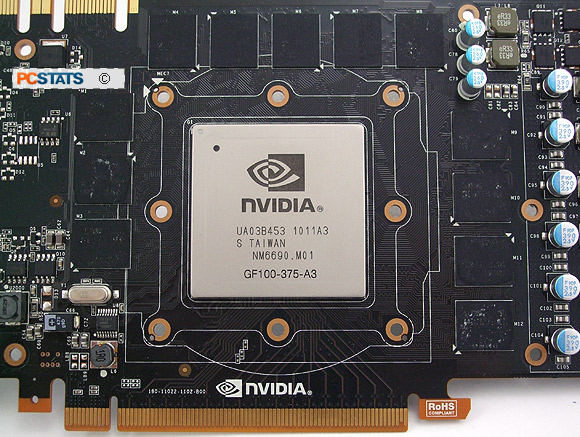
NVIDIA's Geforce 400-series of videocards
all have full support for Mirosoft's DirectX 11 graphics
standards. They support hardware rendering techniques like Tessellation, can take advantage of compute shaders for
calculating AI and Physics, and have a more versatile rendering pipeline.
DirectX 11 videocards also have native Shader Model
5.0 support, and are backwards compatible with any DirectX
10.1 applications. The ASUS ENGTX480-2D1-1536 videocard supports NVIDIA's stereoscopic 3DVision
technology, meaning it can be hooked up in 3-way SLI mode for parallel GPU rendering,
and can do hardware accelerated PhysX force and material simulation technology.
|
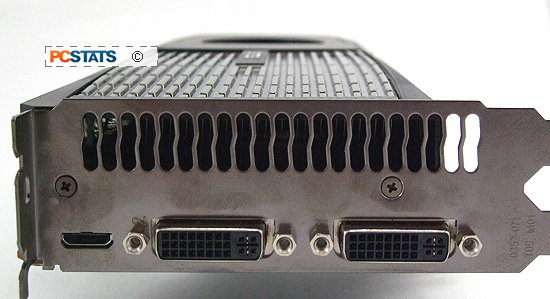
Video outputs: One mini-HDMI and
two DVI.
|
NVIDIA has finally introduced an on-board audio processor with its Geforce 400-series of
videocards, which means no more having to run an S/PDIF audio input from
your sound card or motherboard header in order to get sound over HDMI. Aside from
the mini-HDMI 1.3 output there are also a pair of DVI ports on the ENGTX480-2D1-1536 which
support display resolutions up to 2560x1600 pixels.

Flagship videocards are typically a bit bigger and bulkier than mainstream and mid-range
videocards, and the ASUS ENGTX480-2D1-1536 is no exception.
Measuring 10.5" long and two
expansion slots wide, the ASUS ENGTX480-2D1-1536 is big videocard. Let's strip off the heatsink and go in
for a closer look at the GTX480 next...

